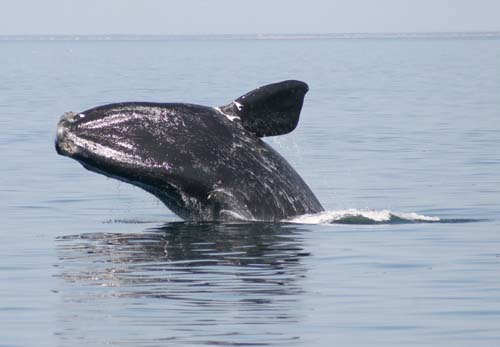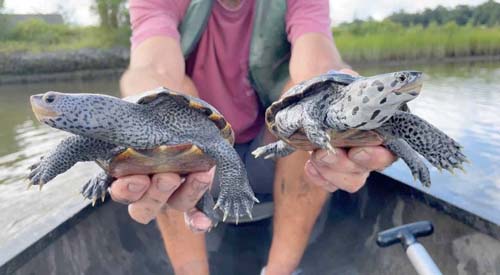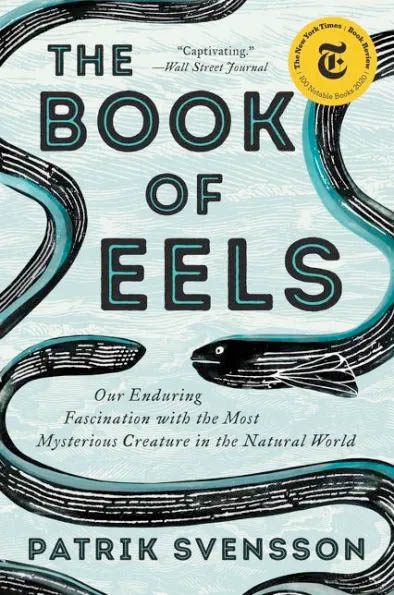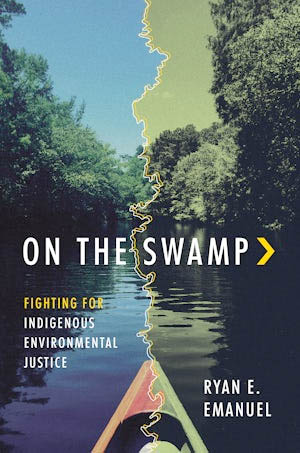 | | | As May turns to June, we head into World Oceans Month with important developments in marine policy and research in our May issue of the RCC Coasts and Ocean Observer. In a key victory for environmental justice, the International Tribunal for the Law of the Sea, has announced — in response to a petition they received in December 2022 from the Commission of Small Island States on Climate Change and International Law — that greenhouse gases are now legally considered marine pollution.  And, at various campuses and research institutions, more and more studies are elucidating the connections between humans and a healthy ocean. New research out of Duke, UNC Wilmington, and the Woods Hole Oceanographic Institute has developed improved methods for predicting where endangered North Atlantic Right Whales will be. This will be key in guiding management strategies to avoid vessel strikes, fishing gear entanglements, and aid in the protection of this species whose deaths conservative interests have falsely claimed are the result of wind turbines. And, at various campuses and research institutions, more and more studies are elucidating the connections between humans and a healthy ocean. New research out of Duke, UNC Wilmington, and the Woods Hole Oceanographic Institute has developed improved methods for predicting where endangered North Atlantic Right Whales will be. This will be key in guiding management strategies to avoid vessel strikes, fishing gear entanglements, and aid in the protection of this species whose deaths conservative interests have falsely claimed are the result of wind turbines.
The Coastal Virginia Offshore Wind project, for example, set to be the largest offshore wind development in the US, is dealing with an ongoing, unfounded smear campaign about the effects of offshore wind on whales — all backed by proponents of oil and gas. But there are promising developments on the front of marine conservation in the US. Many observers are hoping to see the official designation of the proposed Chumash National Marine Sanctuary happen this summer. This would be an exciting cooperative effort between the Northern Chumash Tribal Council – who nominated the site and has been working on securing the designation for almost ten years now – and NOAA’s Office of National Marine Sanctuaries. There is wide public support for the designation of the Chumash Heritage National Marine Sanctuary (NMS) which would safeguard important marine ecosystems as well as sacred sites for the Chumash tribe. Joining the established coalition of support for this proposed sanctuary, Mission Blue, the marine conservation non-profit led by oceanographer Dr. Sylvia Earle, officially declared the proposed Chumash Heritage NMS a “Hope Spot”, reflecting that Mission Blue recognizes it as “critical to the health of the ocean.” The nomination, scoping, and designation process for the Chumash Heritage NMS has not been an easy one, as I describe in my inaugural essay on oceans since joining President Bob Musil in the RCC Coasts and Ocean Program. Since NMS’s are often huge and far away, even from those of us who live near the coast, it’s instructive to see how much Americans adore and want to protect those sea creatures that they get to see up close. In a happy and telling development, two loggerhead sea turtles, Cayman and Finlay, who had undergone rehabilitation in Juno Beach, Florida, were successfully released back into the Atlantic as a friendly crowd cheered them on into the waves. And, if getting to see delightful marine animals helps us appreciate the need to protect them and vast reaches of the ocean, a new app developed by Professor Thomas Miller of the University of Maryland’s Center for Environmental Science, should swell the number of ocean lovers who participate in the Chesapeake Dolphin Watch that tracks dolphins. Collecting this data will help understand dolphin movement and migration patterns, especially since they have returned in increasing numbers, including far up the Potomac River.  The “Diamondback Dash,” also lets people get close to, track, and want to protect an iconic turtle, the diamondback terrapin. Volunteers with the Virginia Department of Wildlife Resources paddle out to survey local populations of the terrapin which was described in Rachel Carson’s Under the Sea-Wind. The terrapin has long been an important source of food, fed to enslaved people on plantations, and to Washington’s troops at Yorktown. But the terrapin was nearly brought to extinction since it became a gourmet restaurant delicacy consumed in huge numbers into the twentieth century. The “Diamondback Dash,” also lets people get close to, track, and want to protect an iconic turtle, the diamondback terrapin. Volunteers with the Virginia Department of Wildlife Resources paddle out to survey local populations of the terrapin which was described in Rachel Carson’s Under the Sea-Wind. The terrapin has long been an important source of food, fed to enslaved people on plantations, and to Washington’s troops at Yorktown. But the terrapin was nearly brought to extinction since it became a gourmet restaurant delicacy consumed in huge numbers into the twentieth century. Now, as the weather warms, we have two recommendations for beach reading in our “Books” section. The first is Patrik Svensson’s, The Book of Eels: Our Enduring Fascination with the Most Mysterious Creature in the Natural World. It reveals just how little we know about eels and their complex life histories. The other, published in April, is by Dr. Ryan Emanuel, a faculty member at Duke University, a trained hydrologist, and a member of the Lumbee tribe. His book, On the Swamp: Fighting for indigenous Environmental Justice details historic oppression, climate challenges, and how Indigenous groups in North Carolina are working towards environmental justice today. To learn more about how you can help marine animals and the ocean, our coasts and the people who depend on them, please contact me directly about how you can get involved with the Rachel Carson Council and with events like Capitol Hill Ocean Week (CHOW) in Washington this June. Just drop me a line at chloe.wetzler@duke.edu | | | | | | | |  RCC Stanback Presidential Fellow – Chloe Wetzler RCC Stanback Presidential Fellow – Chloe Wetzler
Chloe Wetzler is the co-lead of the RCC Coasts and Ocean program. She is a dual Master of Environmental Management and Juris Doctor student at Duke’s Nicholas School of the Environment and Law School. At Duke, she is the symposium coordinator for the Ocean Policy Working Group and a student researcher for the Nicholas Institute of Environment, Energy, and Sustainability. | | | | | | Nine Ways You Depend on a Healthy Ocean Even if you don't live near a coast, the ocean provides food, medicine, oxygen, inspiration and so much more. When we take care of the ocean, the ocean takes care of us. Think of the ocean like the heart of the planet. It pumps oxygen, nutrients, water and weather around the globe. And just like with your heart, a healthy ocean is a healthy you. | | | | | | | | Global Tribunal Issues “Historic” Ruling for Oceans and Small Island Nations "Protecting the global commons of the oceans and atmosphere is a matter of life and death," said one expert who praised the decision. An international tribunal on Tuesday delivered a decision that green groups and leaders of small island nations celebrated as a "groundbreaking victory for ocean and climate protection." | | | | | | | | Rescued Turtles Return to Ocean A crowd cheered and took photos as two loggerhead sea turtles slowly made their way through the sand and into the Atlantic Ocean on Monday after rehabbing at a Florida marine life center. Cayman and Finley arrived at Loggerhead Marinelife Center in Juno Beach after separate incidents left them injured, officials said. The center treats injured turtles and releases them back into their natural habitat as soon as they are healthy enough to survive on their own. | | | | | | | | A Better Way to Find Right Whales Researchers combined sounds from the sea with views from the air Researchers have uncovered a better way to determine North Atlantic right whale presence, which has already helped managers mitigate threats to the endangered species. “I grew up on the U.S. East Coast,” said Duke University research associate Jason Roberts, who studies the whales. “This is the endangered whale in my backyard.” | | | | | | | | Proposed Chumash Heritage National Marine Sanctuary Declared a Mission Blue Hope Spot The proposed Chumash Heritage National Marine Sanctuary was recognized as a Mission Blue Hope Spot yesterday. The collaboration between the Northern Chumash Tribal Council and Mission Blue highlights the importance of designating the Chumash Heritage National Marine Sanctuary by mid-2024 to permanently protect the sacred and irreplaceable ocean ecosystems. | | | | | | | | University of Maryland Professor Develops App to Track Dolphin Spottings in the Chesapeake Bay! Thomas Miller, Professor at University of Maryland’s Center for Environmental Science designed an app where community members can report dolphin sightings across the Chesapeake Bay watershed. This citizen-science data collection will help researchers learn about migration patterns and motivations behind dolphin movements. So far over 7,000 sightings have been logged in the app, Chesapeake Dolphin Watch. | | | | | | | | The Diamondback Dash is Happening Now! If you are looking for an excuse to putter around quiet Virginia waterways in your kayak or other paddlecraft, you’re in luck. The Virginia Division of Wildlife Resources is training volunteers to paddle out in waterways and survey the amount of diamondback terrapins they encounter. This citizen-science data collection is important for monitoring the health of local terrapin populations! | | | | | | | | The Gulf Coast is Home to One of the Last Healthy Coral Reefs. It’s Surrounded By Oil. While the Gulf of Mexico is a region known for oil, it’s also home to something far less expected. Nestled among offshore oil platforms, about 150 miles from Houston, is one of the healthiest coral reefs in the world: the Flower Garden Banks National Marine Sanctuary. Marine researchers who have visited the Flower Garden Banks describe it with awe in their voices. | | | | | | | | | | Quality Over Quantity: Assessing the Real Progress of Marine Conservation Efforts New research, published today by the journal Conservation Letters, assessed the effectiveness of the world's 100 largest marine protected areas (MPAs), which account for a staggering 90% of the total global MPA coverage. The findings are sobering and underscore the urgent need for more robust implementation and management of these critical conservation zones. | | | | | | | | Rough Seas for a Chumash Marine Area No one said addressing climate change would be easy. In fact, it’s widely recognized that there is no silver bullet that can magically erase decades of greenhouse gas emissions or immediately restore degraded habitats. However, there are some solid solutions that if we mobilize quickly and systematically enough should be able to make substantial improvements for the health of our planet. But how should we proceed when different – but equally commendable climate goals – are at odds with one another? | | | | | | | | Sugarloaf Island Hybrid Restoration Project Sees Progress Anyone who has taken a stroll along downtown Morehead City’s waterfront in the last six or seven months may have noticed the hundreds of concrete, flat-top pyramids being strategically placed in rows around the rapidly eroding Sugarloaf Island. Those are wave attenuation devices, or WADs, and part of a bigger, hybrid project to restore 3,520 linear feet of the barrier island’s shoreline. | | | | | | | | Change in Federal Protections for Wetlands Poses Resilience Challenge for States Habitats provide range of benefits to nature and communities As the frequency and severity of wildfires, floods, and droughts intensify across the U.S., scientists have long pointed to the climate resilience benefits of healthy, intact freshwater systems, including ephemeral streams and wetlands—that is, those that fill only when it precipitates. | | | | | | | | Rodanthe House 6th in 4 Years to Collapse Into Atlantic Cape Hatteras National Seashore officials started their Tuesday morning cleaning up another fallen oceanfront house on National Park Service property — and they’re asking for the public’s help. The unoccupied structure at 24131 Ocean Drive in Rodanthe likely collapsed around 2:30 a.m. Tuesday, officials said. To protect visitors while the cleanup takes place, a milelong section of beach from Sea Haven Drive to South Shore Drive is temporarily closed. | | | | | | | | “Frisky little songbird” Needs Protection From Sea Level Rise, Environmental Group Tells Feds Center for Biological Diversity petitions to put saltmarsh sparrow on Endangered Species list. An environmental organization is asking the federal government to list the saltmarsh sparrow, a bird living on wetlands on the east coast, including Virginia, for protection under the Endangered Species Act due to expected losses from sea level rise and human development. | | | | | | | | Judge to Decide Whether to Delay Construction of Dominion’s Offshore Wind Project A federal judge will soon decide whether Dominion Energy obtained necessary federal approvals for its Coastal Virginia Offshore Wind project. Judge Loren L. AliKhan is expected to make a decision on a request for a preliminary injunction as part of a lawsuit against Dominion and U.S. President Joe Biden’s administration officials, who are overseeing construction of the offshore wind project. | | | | | | | | Study Shows Ocean May Be Spitting Toxins Back at Us There’s something about ocean spray that enchants us all, not least of those of us who fancy being slung out of a resplendent, spuming cylinder of H2O. But a recent Stockholm University study suggests this quintessence of our pursuit and of immaculate freedom might, in a sense, be anything but. In a day and age when we have to mull about knowing everything from sex to the sun can kill us, sea foam may be one more thing. | | | | | | | | World Ocean Day 2024 Celebrate World Ocean Day with the National Museum of Natural History on Friday, June 7, 2024. Join ocean scientists, researchers, and educators in the Sant Ocean Hall for an exciting series of interactive experiences celebrating our blue planet and exploring all the ways science and community action can connect us to our waterways. | | | | | | | | “We’re All Plastic People Now” – New Emmy Award-winning Documentary Featuring Ted Danson on the Effects of Plastics on Human Health.  This documentary explores how pervasive plastic pollution is. Plastics are now found all over the planet – from inside our bodies to the deepest depths of the ocean. This documentary debunks some of the myths around recycling, puts the extent of this crisis into perspective, and highlights the actions we as a society need to take now to address this crisis. This documentary explores how pervasive plastic pollution is. Plastics are now found all over the planet – from inside our bodies to the deepest depths of the ocean. This documentary debunks some of the myths around recycling, puts the extent of this crisis into perspective, and highlights the actions we as a society need to take now to address this crisis.
Introduced by actor and environmentalist Ted Danson, We’re All Plastic People Now investigates the hidden story of plastic and its effects on human health. In an era of throw-away ease, convenience has cost us our well-being. We’re All Plastic People Now asks the question, how much evidence do we need before we decide to take action? Aired: 01/16/24. Rating: NR Click here to watch | | | | | | |  “Remarkably little is known about the European eel, Anguilla anguilla. So little, in fact, that scientists and philosophers have, for centuries, been obsessed with what has become known as the “eel question”: Where do eels come from? What are they? Are they fish or some other kind of creature altogether? Even today, in an age of advanced science, no one has ever seen eels mating or giving birth, and we still don’t understand what drives them, after living for decades in freshwater, to swim great distances back to the ocean at the end of their lives. They remain a mystery. “Remarkably little is known about the European eel, Anguilla anguilla. So little, in fact, that scientists and philosophers have, for centuries, been obsessed with what has become known as the “eel question”: Where do eels come from? What are they? Are they fish or some other kind of creature altogether? Even today, in an age of advanced science, no one has ever seen eels mating or giving birth, and we still don’t understand what drives them, after living for decades in freshwater, to swim great distances back to the ocean at the end of their lives. They remain a mystery.
Drawing on a breadth of research about eels in literature, history, and modern marine biology, as well as his own experience fishing for eels with his father, Patrik Svensson writes a book about this unusual animal.
In The Book of Eels, we meet renowned historical thinkers, from Aristotle to Sigmund Freud to Rachel Carson, for whom the eel was a singular obsession. And we meet the scientists who spearheaded the search for the eel’s point of origin, including Danish marine biologist Johannes Schmidt, who led research efforts in the early twentieth century, catching thousands upon thousands of eels, in the hopes of proving their birthing grounds in the Sargasso Sea. Blending memoir and nature writing, Svensson’s journey to understand the eel becomes an exploration of the human condition that delves into overarching issues about our roots and destiny, both as humans and as animals, and, ultimately, how to handle the biggest question of all: death.” An unusual and beguiling guide to an unusual and beguiling animal. . . . Svensson’s book, like its subject, is a strange beast: a creature of metamorphosis, a shape-shifter that moves among realms. It is a book of natural history, and a memoir about a son and his father. It is also an exploration of literature and religion and custom, and what it means to live in a world full of questions we can’t always answer.” — The New Yorker Click here to purchase | | | | | | by Professor Ryan E. Emanuel  Despite centuries of colonialism, Indigenous peoples still occupy parts of their ancestral homelands in what is now Eastern North Carolina—a patchwork quilt of forested swamps, sandy plains, and blackwater streams that spreads across the Coastal Plain between the Fall Line and the Atlantic Ocean. In these backwaters, Lumbees and other American Indians have adapted to a radically transformed world while maintaining vibrant cultures and powerful connections to land and water. Like many Indigenous communities worldwide, they continue to assert their rights to self-determination by resisting legacies of colonialism and the continued transformation of their homelands through pollution, unsustainable development, and climate change. Despite centuries of colonialism, Indigenous peoples still occupy parts of their ancestral homelands in what is now Eastern North Carolina—a patchwork quilt of forested swamps, sandy plains, and blackwater streams that spreads across the Coastal Plain between the Fall Line and the Atlantic Ocean. In these backwaters, Lumbees and other American Indians have adapted to a radically transformed world while maintaining vibrant cultures and powerful connections to land and water. Like many Indigenous communities worldwide, they continue to assert their rights to self-determination by resisting legacies of colonialism and the continued transformation of their homelands through pollution, unsustainable development, and climate change.
Environmental scientist Ryan E. Emanuel, a member of the Lumbee tribe, shares stories from North Carolina about Indigenous survival and resilience in the face of radical environmental changes. Addressing issues from the loss of wetlands to the arrival of gas pipelines, these stories connect the dots between historic patterns of Indigenous oppression and present-day efforts to promote environmental justice and Indigenous rights on the swamp. Emanuel’s scientific insight and deeply personal connections to his home blend together in a book that is both a heartfelt and an analytical call to acknowledge and protect sacred places. Click here to purchase | | | | | | The May 2024 issue of RCC Coasts and Ocean was produced by Ross Feldner | | | | | |  The Rachel Carson Council Depends on Tax-deductible Gifts From Concerned Individuals Like You. Please Help If You Can. The Rachel Carson Council Depends on Tax-deductible Gifts From Concerned Individuals Like You. Please Help If You Can. | | | | | | | |  Sign Up Here to Receive the RCC E-News and Other RCC Newsletters, Information and Alerts. Sign Up Here to Receive the RCC E-News and Other RCC Newsletters, Information and Alerts. | | | | | | | | | | | |